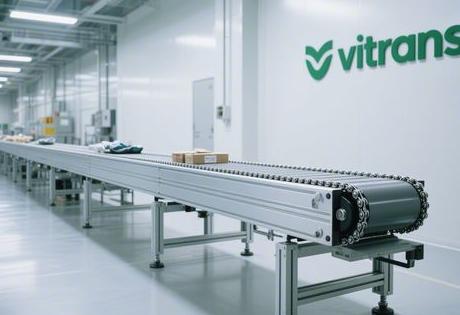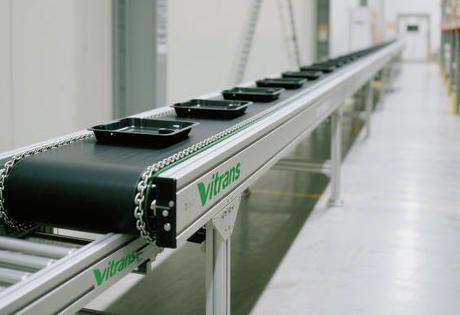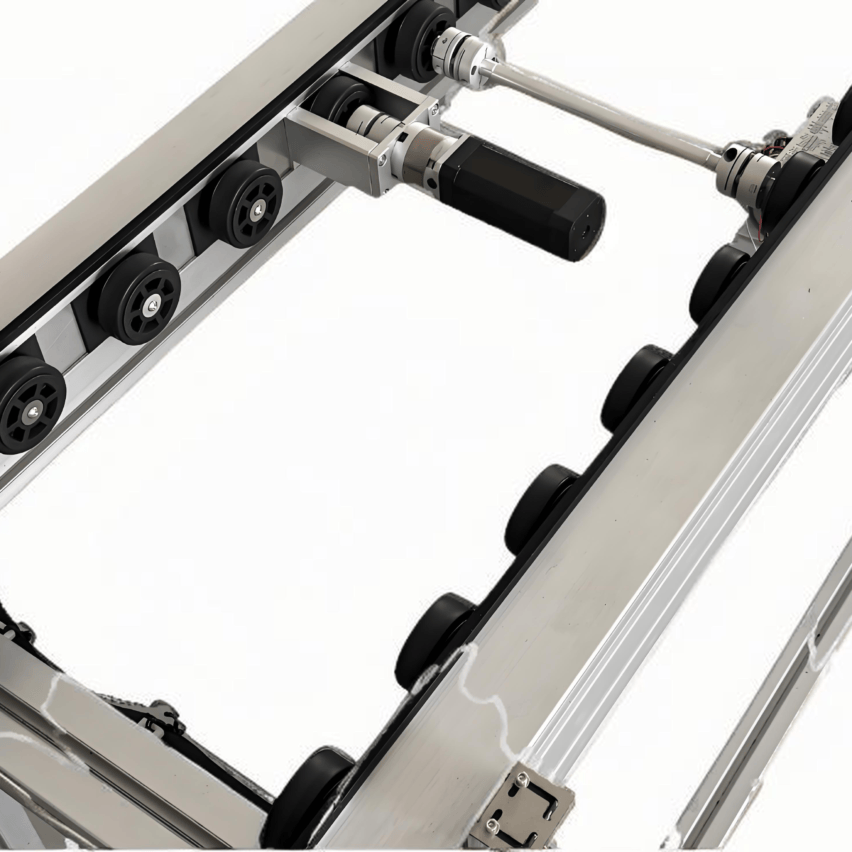What is the core value of spatial optimisation
Multi-deck roller lines transform flat conveyors into three-dimensional systems by stacking conveyor layers vertically. The core values areSpace utilisation upgraded by 90% or moreFor example, in a three-layer structure, the receiving, diverting and output layers are vertically distributed, and the footprint is only 60% of a single-layer system. whereas a common single-layer drum line in industrial scenarios occupies an area of more than 50 m2, Teckwit's three-layer solution can be compressed to 30 m2, while the processing capacity can be increased twofold. This design is particularly suitable forHeight-constrained conversion of an old factory buildingFor example, a warehouse with a floor height of 4.5 metres can be divided into three floors with a floor-to-ceiling distance of 2.8 metres.

Why traditional single-storey programmes exacerbate space conflicts
The single drum line needs to be extended horizontally to meet the production capacity, which leads to blockage of the channel and crossing of pedestrian and vehicle flow lines. Case shows: an auto parts factory single line length of 40 metres, the material circuitous path accounted for the workshop area of 35%, while the transformation of three drum line, the material through the rate of enhancement of 70%, the buffer area to reduce the 60%. more serious is that more than 10 metres of a single line requires additional support structure, but instead of crowding the equipment maintenance space.
How to accurately measure spatial parameters
Step 1: Dimensional mapping
Record the clear height of the plant, the position of the columns, the elevation of the fire pipework, with emphasis on the non-removable obstacles. Roller floor heights need to meet the formula.H≥cargo height+safety clearance 200mm+thickness of roller support. If the height of the goods is 500mm, the clear height of each floor needs to be ≥ 700mm.
Step 2: Dynamic path simulation
Turning radius matching is verified by 3D software. Standard Requirements.Inside radius of turn ≥ 1.5 times the line widthFor example, a 600mm wide conveyor line requires a 900mm turning radius. The taper of the conical roller is recommended to be 2.4°-3.6° to prevent the material from shifting.

Step 3: Reserve access for maintenance
Multi-storey structure must retain ≥800mm lateral access space with quick release bracket design. Drive module preferredDrum motor built-inThe motor saves 40% longitudinal space compared to an external motor.
Where to find compact solutions for heavy loads
Heavy load scenarios (single piece > 500kg) require a combination of both technologies:
- Double sprocket drive system: Synchronised drive by double side chains, 50% higher stability than single sprocket, allowing floor heights to be compressed to 1.2m
- φ76mm thickened rollerWall thickness 2.5mm carbon steel roller with hexagonal shaft structure, single support up to 800kg, spacing can be relaxed to 300mm.
Automotive parts industry case studies show that the combination enables a three-layer line load capacity of 1.2 tonnes/layer, while reducing layer height by 151 TP3T.
What happens if you ignore interlayer dynamic isolation
When independent drivers are not used, the layers of rollers are forced to run in sync, leading to three major problems:
- Soaring idle energy consumption: No-load power consumption accounted for 32% of the total in a logistics centre due to lack of hierarchical control
- Decline in diversion efficiency: The error rate is as high as 8% when mixing fast and slow parts.
Solution: Multi-channel independent drive technology
Through CN 222757481 U patent technology, adopting active/slave roller assembly separation control. The receiving layer is equipped with frequency conversion motor (speed 0.5m/s), the sorting layer is switched to servo drive (accuracy ±2mm), and the output layer adopts accumulation roller (pressure adjustable 0.5-3N/mm²), which reduces the energy consumption by 40% and the sorting efficiency reaches 99.5%.
Consequences of not using conical rollers in turning sections
Turning of the horizontal drum will result in centrifugal deflection of the material, as the test shows:
- Box offset = 0.018 x linear velocity² ÷ turning radius
At a speed of 1m/s and a radius of 1m, a 30kg box can be deflected by up to 180mm.
Optimised solutions: dynamic compensation design
Adoption of taper 3° conical roller set, with the outer roller speed increase 15%. meanwhile, the second layer is set up with a guide wheel, which provides 5-10N lateral resistance through a spring mechanism to control the offset within ±20mm.
The space cost of mis-selection of anti-corrosion materials
When ordinary carbon steel rusts in a humid environment, the coefficient of friction drops from 0.4 to 0.15, forcing a reduction in floor height to prevent tipping. A seafood processing plant therefore expanded the floor spacing from 1 metre to 1.8 metres, and the space utilisation rate plummeted by 45%.
Coping strategy: environmental adaptation selection
- Humidity>80% environment: use stainless steel 316L drum + galvanised frame
- Chemical exposure scenarios: polyurethane-coated rollers (acid and alkali resistance class PH2-12)
- Low-temperature warehouses: ban PVC materials (embrittlement temperature -10°C) and replace them with aluminium alloy rollers (-30°C resistance).
Through the three strategies of three-layer structure compression, independent drive precision control, and environment-adapted selection, Teckwah's solution successfully helped an e-commerce warehouse to achieve a daily average of 100,000 pieces of sorting in a 3,000m2 plant, saving 1,400m2 of land compared to a single-layer system. The key point is to combineSpatial constraints into three-dimensional optimisation opportunitiesThe potential of the plant is unlocked through professional customisation.













